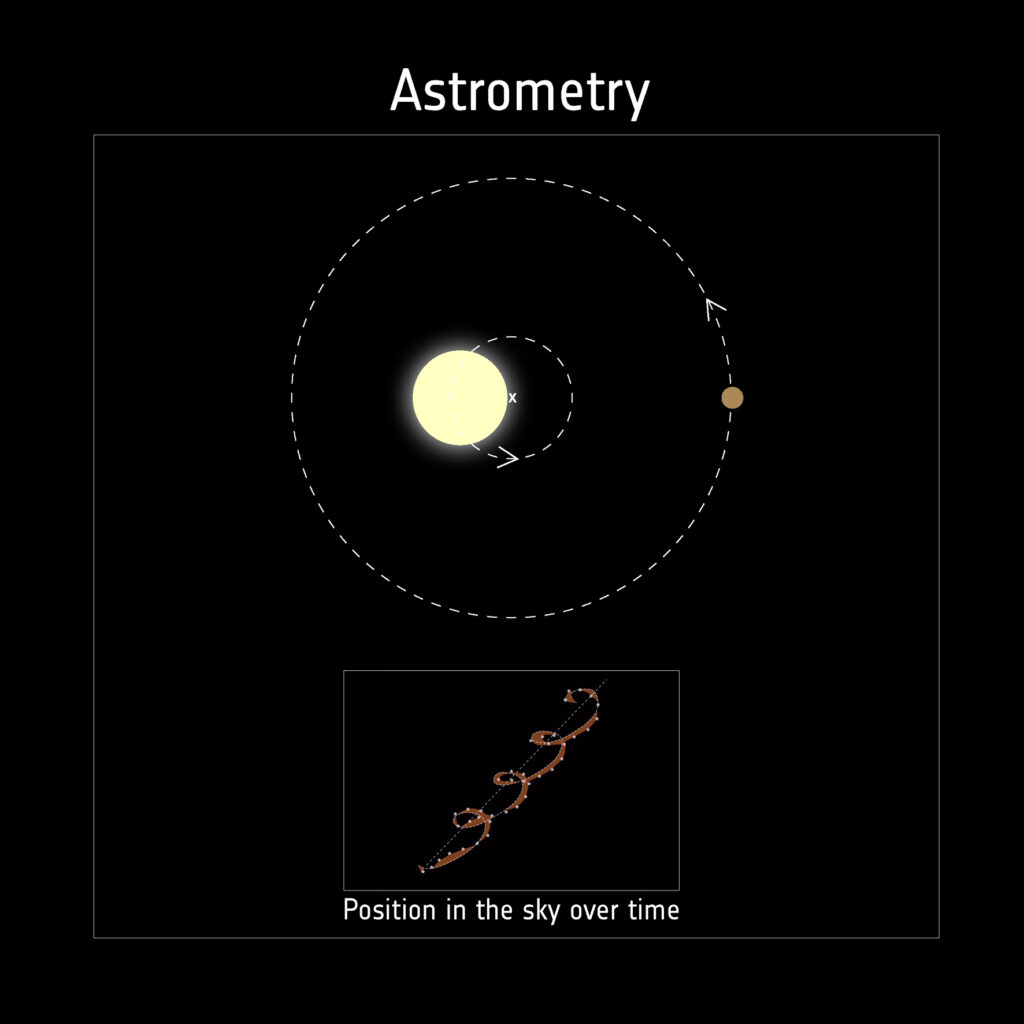How it works:
Like the radial velocity method, this technique makes use of the fact that star and planet both orbit a shared center of mass. For systems that we look at “from the top”, this leads to periodic shifts in the star’s position, which can be tracked with high-precision telescopes. These shifts are minimal, and become more apparent when observing the distance of the star to surrounding other stars. If this distance changes, the presence of a mass, an exoplanet, can be inferred.

Since Earth’s atmosphere distorts the incoming light slightly and the displacement of a star due to its planet is only very small, this method is almost impossible to use with ground-based facilities and requires telescopes in Earth’s orbit. In fact, ESA’s gaia mission is expected to provide high-precission astrometric data and contribute to the finding of thousands of stars.
However, because the changes in the star’s position are so small, it is still very difficult to find new exoplanets with this method, and only a handful of such objects have been identified . The method is additionally used to confirm planetary candidates previously found by other methods, and to characterize them further.
Animation:
Credit: nasa.gov
The most massive exoplanet listed by NASA Exoplanet Archive found with the astrometry method:
The exoplanet DENIS-P J082303.1-491201 b was discovered in 2013 in a system just under 68 light-years away in the constellation Vela. It has not yet been sufficiently clarified whether the record holder of the most massive exoplanet discovered so far is a giant gas planet or a brown dwarf. In 246 days it orbits a brown dwarf, which is about 7.5% of the mass of our Sun.
It is currently the only planet discovered directly by the astrometry method.
Interesting questions on the topic:
Q: Which parameters can we gain from astrometry?
A: Similar to radial velocity, the displacement of the star is dependent on the planet’s mass. Additionally, observing the frequency of the star’s motion gives the planet’s orbital period.
Q: Which planets are particularly suitable for the direct imaging method?
A: The star’s displacement is proportional to the planet’s mass, so heavier planets are more easily found than lighter ones.
The displacement is also proportional to the orbital distance, so this method is very sensitive to planets far away from their star, in contrast to e.g. the transit method.
The star’s motion appears greater for stars that are closer than for far-away ones, so the former are more promising astrometry targets.
Similar to direct imaging, astrometry requires to look at the planetary system more or less in “top-down” direction.
Find more books to the topic exoplanets and astronomy for children, amateurs and scientists in our booklist.
Get back to the outreach page
